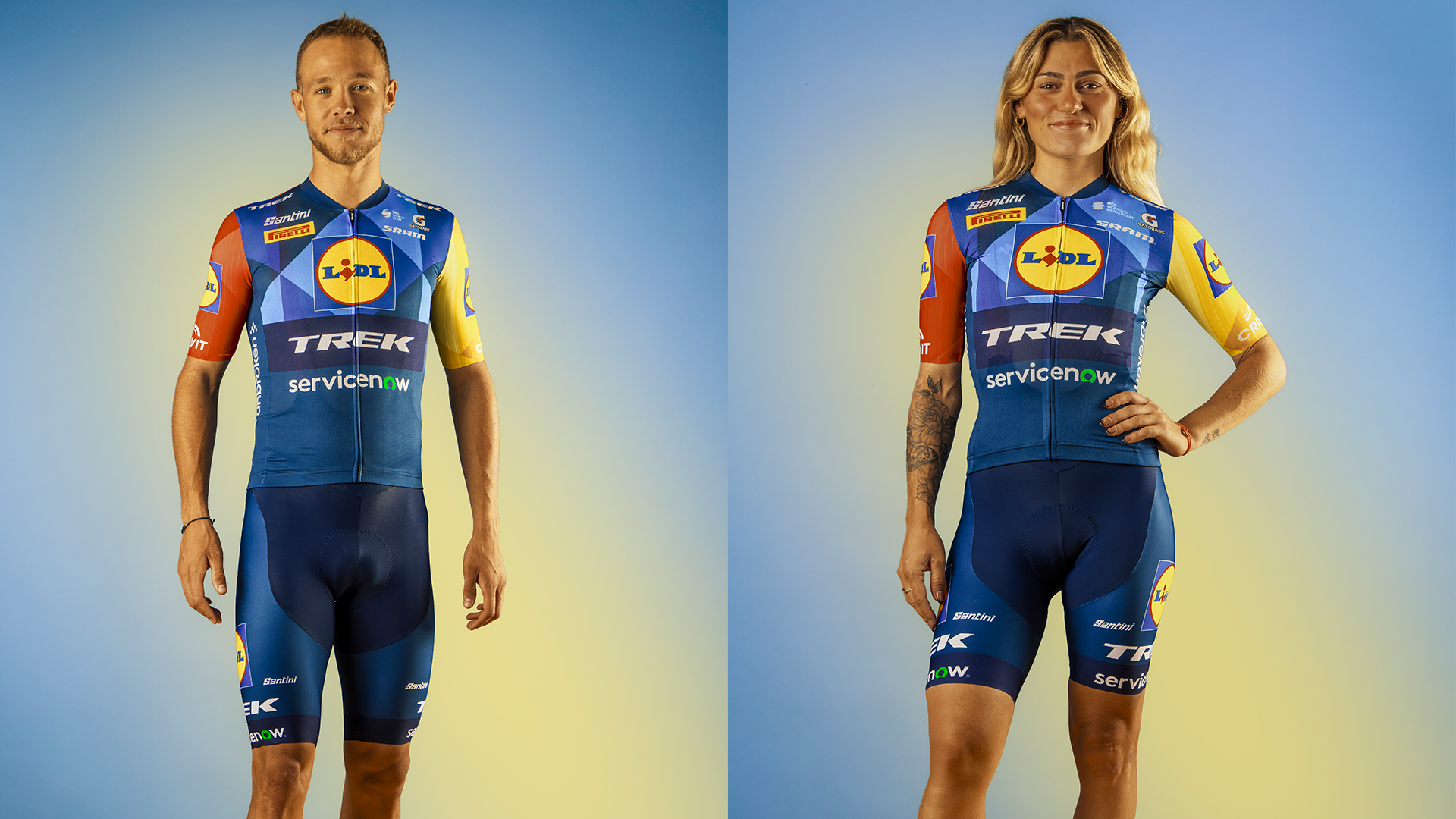Best energy bars: High-carb snacks for on and off the bike
We've tested the best energy bars for cycling to provide fast refuelling for your rides
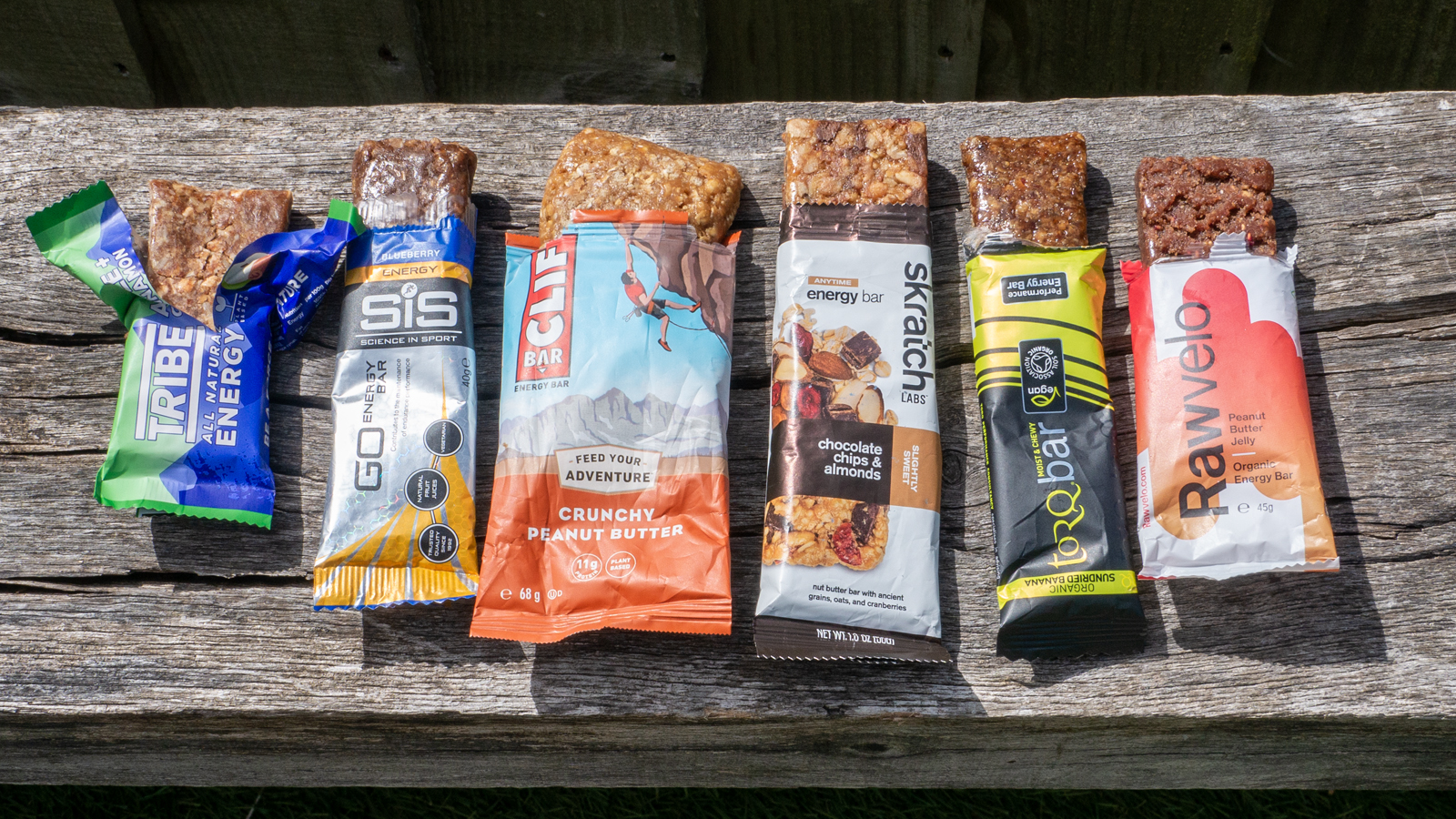
The best energy bars will help keep you fuelled, whether you're riding, running, hiking or undertaking any other form of exercise.
Packed with oats and other slower-release carbohydrate sources as well as dried fruit, the best energy bars deliver a mix of more simple sugars. So unlike the best energy gels, which usually have a high content of simple sugars such as glucose and fructose and are designed for a rapid energy boost, the best energy bars are a good way to sustain yourself on longer, lower-intensity rides. They're also much less likely to cause gastric distress than a gel.
The other fuelling option is one of the best energy drinks. As with gels, these usually contain more simple sugars than bars and so give you a more immediate energy hit. They also usually offer electrolytes to help replenish salts lost when riding, and of course, water to keep you hydrated.
Energy bars for cycling will usually give you a good dose of carbohydrates to help keep your blood glucose levels up, paired with some fat and protein to add some balance, with the latter also aiding muscle recovery post-ride.
Energy bars are an efficient way to fuel to avoid bonking, also known as hitting the wall. Technically called exercise-induced hypoglycaemia, this is what occurs when your blood sugar drops and your body's glycogen stores are depleted.
With so many different options available from sport-specific brands and our supermarket shelves alike, which are the best energy bars? And how do you differentiate one from the next? To answer this, I've spent months testing and tasting all the available options in a bid to find out which are great for quick energy, slow energy, recovery and more, as well as which actually taste like something you might want to eat.
Best energy bars for cycling
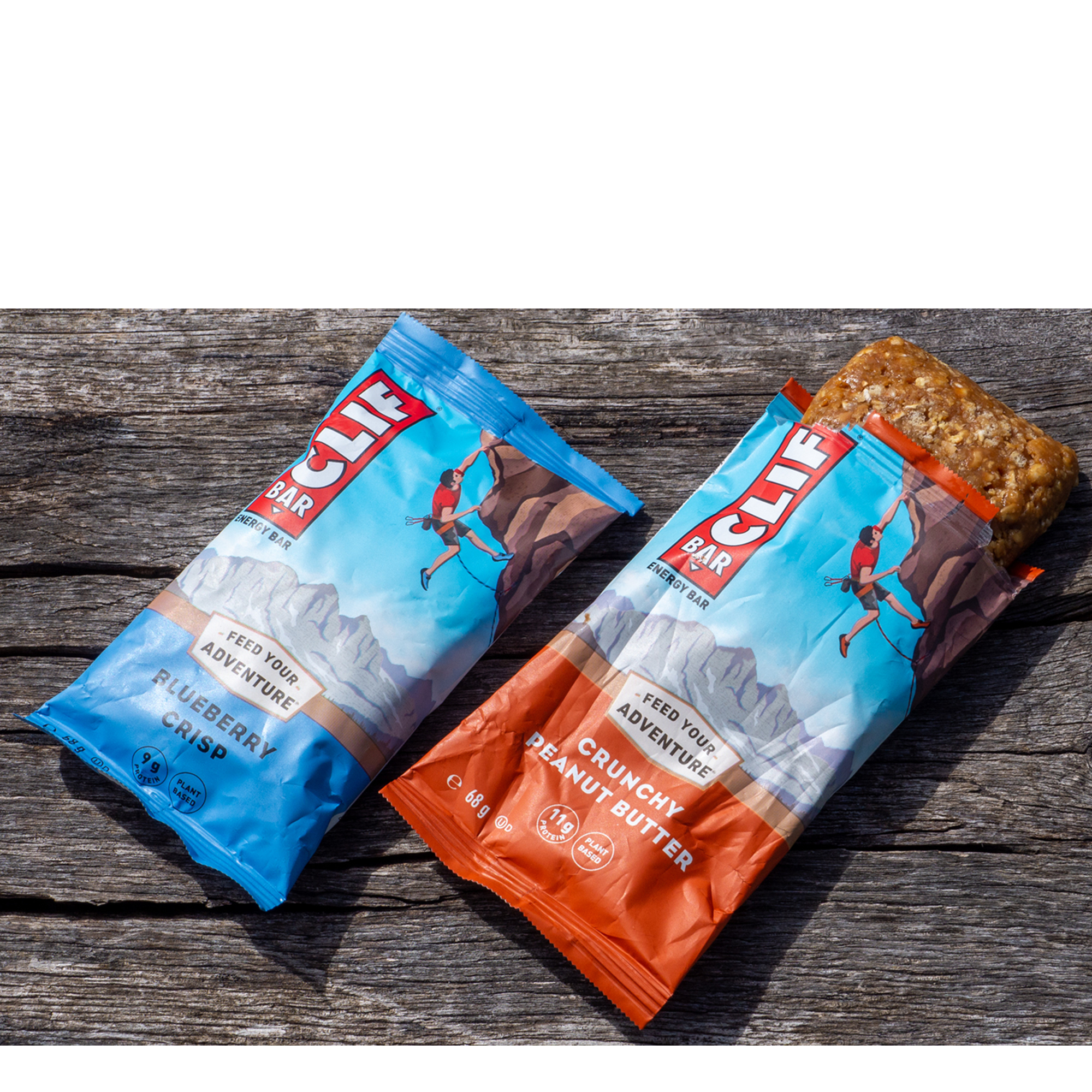
➕ High carb content
➕ Widely available
➖ Hard to eat during efforts
The Clif Bar earns a place on this guide for various reasons but with the highest carbohydrate contents per bar on this list, it's the bar we reach for when we have big adventures planned or long rides ahead. However, this comes primarily from a large overall size. At 68g per bar, it's more than 50 per cent bigger than some of the others here, which means it'll take a little longer to get down. Therefore, it's best reserved for lower-intensity days where you can take your time, rather than high-paced races where you need to eat quickly and get back to the task at hand.
There are six flavours to choose from and the exact constitution of nutrients within depends on the flavour you choose. But each gets a dose of fat and protein alongside the 45g of carbohydrate.
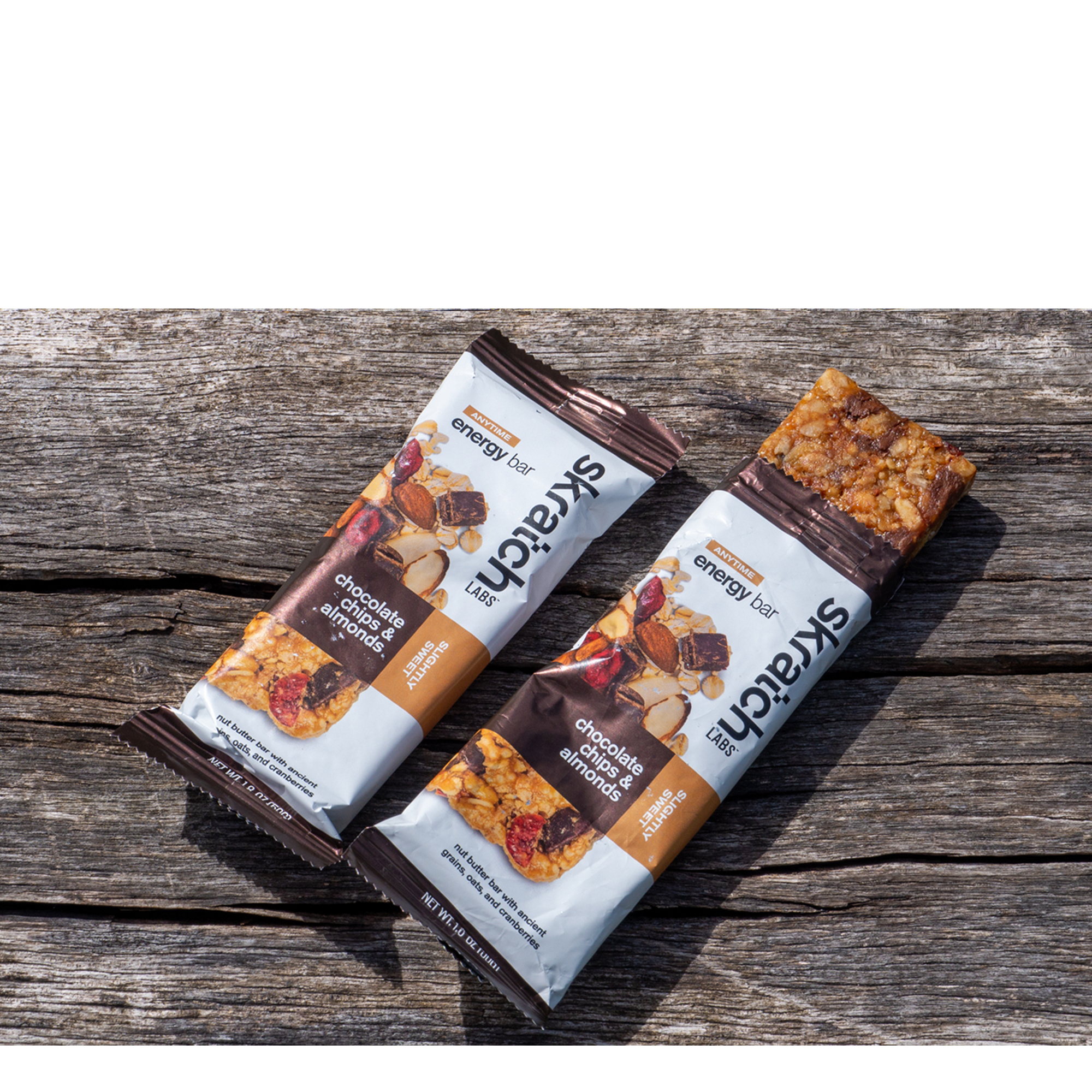
➕ Natural taste keeps them palatable for longer
➖ No nut-free options
As the name suggests, Skratch Labs Anytime energy bars are not only made to be eaten while exercising. Like most on this list, the added fats help to satiate hunger and proteins help to prevent muscle breakdown and encourage post-exercise recovery.
At 50 grams per bar, they are slightly smaller than the Clif Bars but are still bigger than most here, so they are better saved for training rides or pre-ride snacks. The one downside is the lack of nut-free flavours, so if you're allergic you'll need to look elsewhere.
The aesthetics and texture of the Skratch bar are by far the most natural, whole-food-looking option I tested, and the taste follows the same pattern in that it tastes like you expect a combination of the ingredients would. You can actually see the oats, nuts, chocolate chips and fruit, and there are no chemical-like aftertastes to deal with. I can imagine this being under one of those glass covers at the counter of a coffee shop.
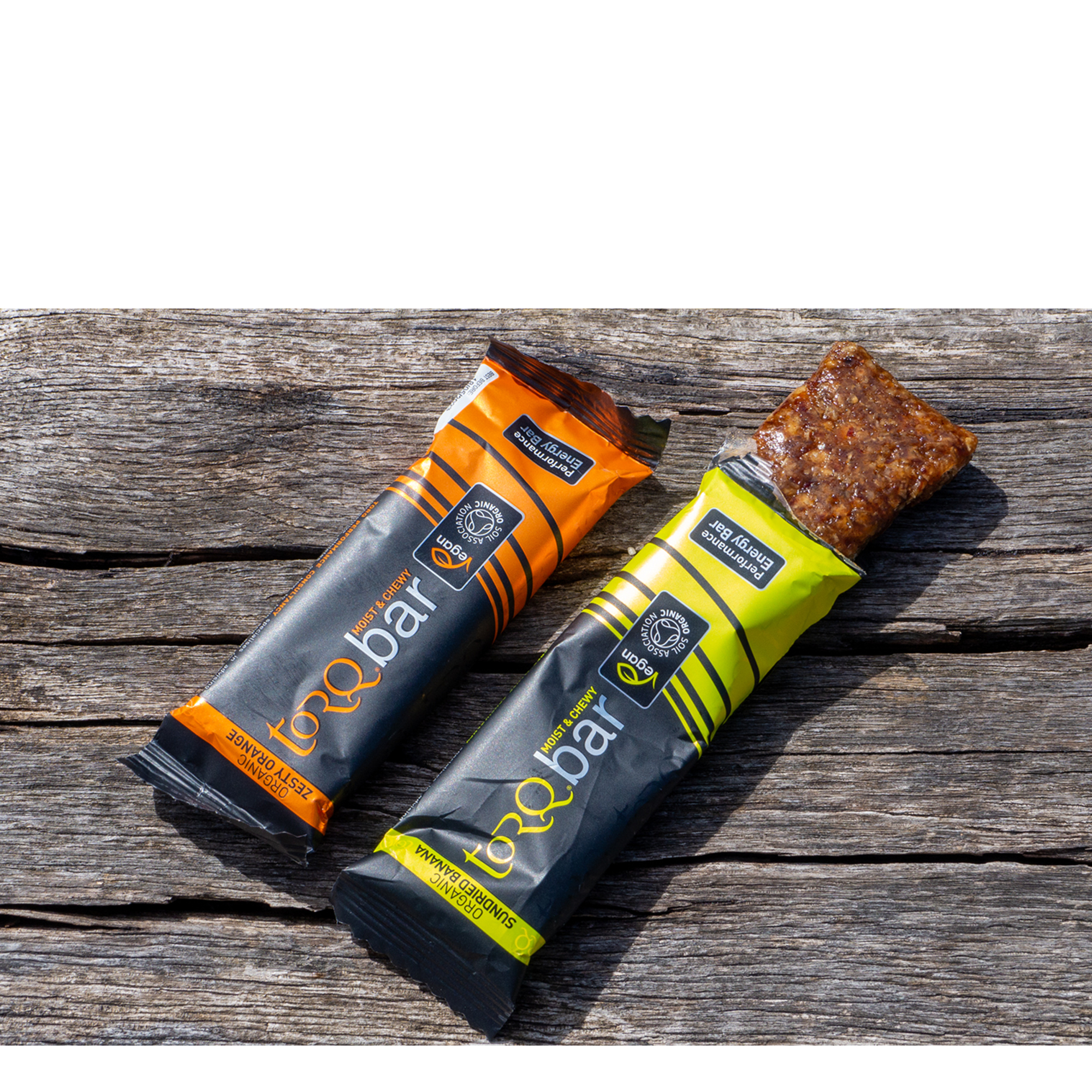
➕ 2:1 glucose-to-fructose ratio
➕ Designed to work alongside other Torq products
➖ Minimal fat and protein
While it doesn't have as many total carbohydrates as the Clif Bar, with less than a gram of fat and two grams of protein, the Torq Bar is by far the most carb-focussed bar in this list, packing 30 grams in a 45g serving.
As such, the Torq Bar is our pick as the best energy bar for fuelling, especially for those who want to minimise fat and protein, but don't like energy gels or high-sugar-concentration drinks. What's more, it works for fuelling alongside Torq's other products, as it forms part of the brand's so-called Fuelling System. As such, each of the gels, drinks, packets of chews and bars come with a round 30g of carbohydrates per serving, in a 2:1 glucose to fructose ratio to make it easy to hit the body's widely-accepted limit of 90 grams of carbs per hour.
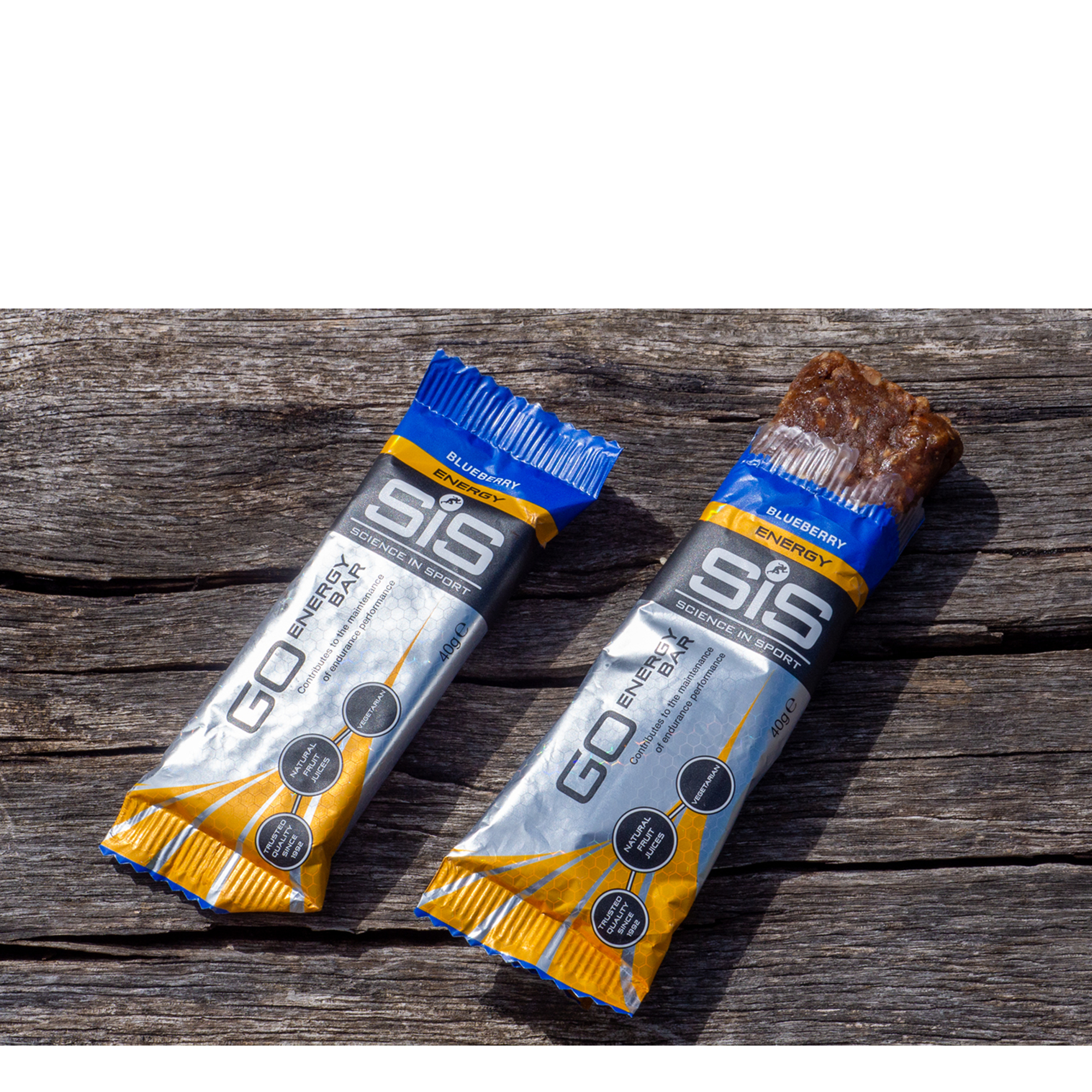
➕ Moist texture is easy to consume
➖ Artificial taste and texture that may not appeal
Another good bar for workout fuel, but equally useful for everyday use, is the 40g SIS Go Energy bar, which comes in five flavours. These are also easy to get out of the packaging one-handed, and comprise a chewy, moist texture that's just as quick to consume - it didn't dry out my mouth even when trying to get one down mid-way through a hard indoor interval session.
However, like Torq, the SIS Go Energy bars also come with an unnatural look, texture and taste. The Blueberry flavour I've been using doesn't taste bad, but it doesn't particularly taste like blueberries either. Again, when riding hard, I struggle to notice these things and prioritise ease of consumption.
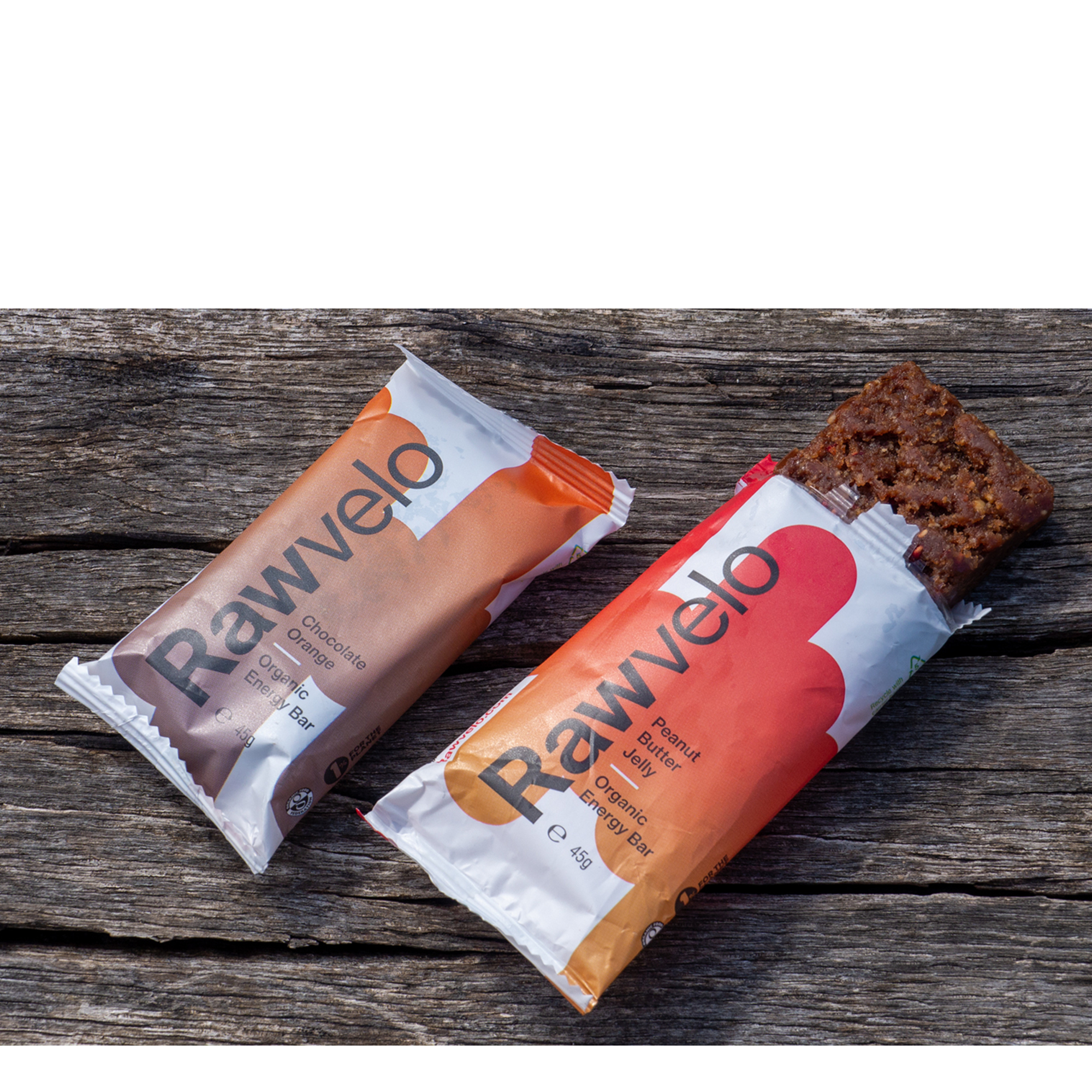
➕ Organic ingredients and eco-friendly packaging
➖ High-fat content might not suit nutritional needs
Rawvelo prides itself on its eco-friendly business practice, and that pattern is apparent at every turn with the Rawvelo Organic Energy Bars. Not only is the packaging recyclable, but the ingredients are all-natural and organic - and perhaps most importantly, you'll have actually heard of them all.
The ingredients are cold-pressed, rather than baked, which is claimed to be better for retaining nutrients for longer. In addition, Rawvelo makes a pledge to donate one per cent of its revenue to environmental causes. The plastic wrapper is easy to pop open with a squeeze, rather than needing to bite off a corner, which would then inevitably become litter.
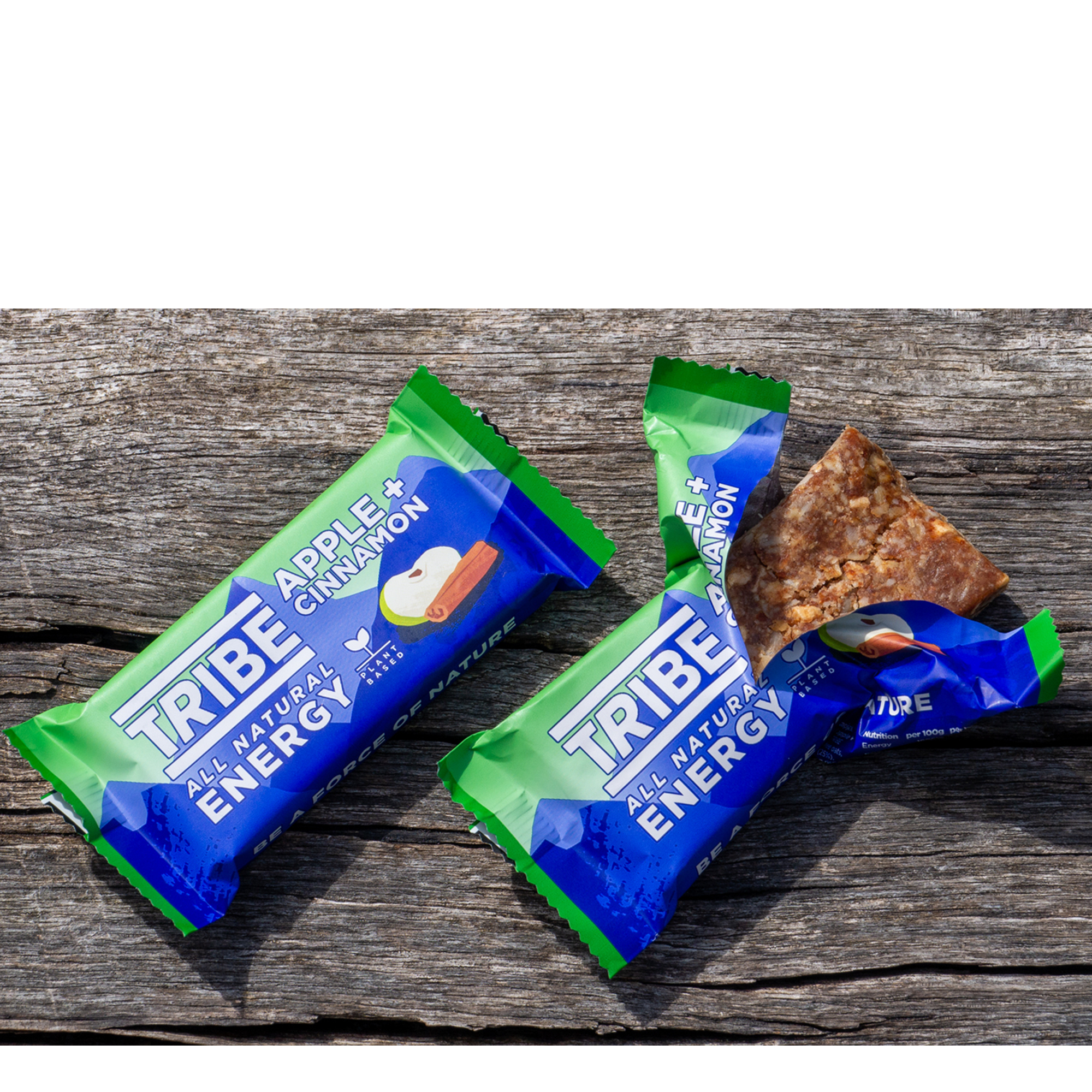
➕ Sustained energy release ideal for long rides
➖ Better options for demanding energy needs
Of course, not all energy bars are designed to be consumed during the rigours of high-intensity exercise. In fact, most aren't, and Tribe's Infinity Energy Flapjack is proof of that. While the promise of infinite energy is clearly hyperbole, it's a fitting name for a product that offers 17g of slow-release carbohydrates that, in my testing at least, did a good job of keeping me going throughout a long easy ride, while the 9.5g of fat and 6.7g of protein kept me feeling full for long periods without the usual hunger pangs that hit. The taste is mild, natural and pleasant, while the recipe is dairy- and gluten-free, while also being suitable for vegans.
Nutrition Information compared
| Nutrition Information (Per 100g) | Energy | Fat | of which Saturates | Carbohydrate | of which Sugars | Fibre | Protein | Salt |
| Clif Oat and peanut butter energy bar | 1633kJ / 388kcal | 11g | 1.8g | 53g | 25g | 7.5g | 16g | 0.85g |
| Skratch Labs Anytime peanut butter and chocolate | 2259kJ / 540kcal | 28g | 6g | 60g | 16g | 4g | 10g | 0.5g |
| Torq Bar Organic Zesty Orange | 1441kJ / 340kcal | 1.6g | 0.3g | 76g | 39g | 3.3g | 3.6g | 0.13g |
| SIS Go Energy Bar (Blueberry) | 1467kJ / 347kcal | 5.3g | 0.8g | 63g | 26g | 2.7g | 12g | 0.3g |
| Rawvelo Organic Peanut Butter and Jelly | 1690kJ / 403kcal | 15.7g | 2.9g | 46.1g | 37g | 6.9g | 15.9g | 0.2g |
| Tribe Infinity Energy | 1695kJ / 406kcal | 20g | 2.8g | 17g | 16g | 12g | 14g | 0.38g |
How to choose the best energy bars for you
Why energy bars at all?
Comprising solid ingredients such as oats, rice and nuts, energy bars are typically best for slow-release carbohydrates, meaning they are suitable for anyone wanting to fuel longer, lower-intensity efforts such as endurance training rides or off-the-bike adventures. They also contain a small-to-medium amount of fat and protein, which not only helps you to feel full for longer but also helps with post-workout recovery too.
The act of chewing also helps relieve feelings of hunger, so it's likely that you'll feel full for longer than with a carb-intensive gel or drink, which can give you an on-bike sugar rush, followed a little later by an energy trough.
What composition of carbs, fat and protein is best in an energy bar?
There's no one-size-fits-all answer to this, and the best energy bar for you will ultimately depend on what you want from it. If you're after something to fuel you quickly, then a bar with more carbs and less fat and protein will be best. However, if you want to fuel a big day of easy riding, then higher fat content will be fine. A little protein will help to keep you feeling full for longer and will prevent your body from breaking down your own muscles in extreme circumstances.
It's worth noting that many energy bars contain nuts, which contribute a significant amount of fat content. This is usually considered good fat though, so shouldn't be a turn-off. It does make things tricky for nut allergy sufferers.
When should you eat energy bars?
During exercise, your body can process 60 grams of carbohydrate from glucose, and a further 30-48 grams from fructose, assuming you've trained your gut. If you're looking to fuel workouts at this rate, energy bars might only be used during the early part of a race or training session. If you're fuelling solely using energy bars, then you'll need to check the quantity of carbohydrates in your chosen bar and measure your intake accordingly.
However, a positive about some energy bars is that they are reasonably well-rounded foods that can be eaten off the bike, too. In this scenario, eat to hunger like you would any other snack, but remember they are still high in carbohydrates, so take it easy.
Are energy bars good for you?
Depending on the ingredients chosen, energy bars can provide a healthy on- or off-bike snack. While some are packed with syrups and chocolate for flavourings, and are probably not likely to be overly healthy, others can contain oats, nuts and dried fruits, which when eaten in the correct quantities are far from unhealthy.
What's wrong with supermarket options?
When you cut through all the marketing claims, none of the best energy bars listed here or anywhere else include any magic ingredients or silver bullets. Ultimately they are all a mix of carbohydrates, proteins and fats made from ingredients like rice, oats, fruits, nuts and so on. Head to the correct part of your local supermarket and you'll find countless products with similar ingredients that will ultimately serve a similar purpose at a tenth of the price.
Sure, you may need to spend some time reading the ingredients, but that investment in time could save you a lot of cash over the course of a season's worth of riding. Of course, this will be a case of trial and error to find a suitable taste, texture and composition, but with such a vast abundance of options and the relative cost saving available, it should still prove worth it if you want to go down this route.
How we tested energy bars to find the best
Finding the best energy bars and weeding out any that weren't up to muster required a lot of hands-on testing with a whole range of different brands and options.
The primary consideration is that of the nutritional composition, i.e. how much carbohydrate, protein and fat is included in each. Take a look at the ingredients list, to see whether it's packed with words we can't pronounce, or made solely from natural and wholefood ingredients.
This info then needs to be balanced against the look, texture and taste, including how easy it is to chew, break down and swallow. There's no point in having great ingredients if a bar tastes horrible and feels unpleasant to eat.
I also considered the ease of use of the packaging, i.e. how easily it can be opened whilst riding along, and the eco-friendliness of the packaging.
The latest race content, interviews, features, reviews and expert buying guides, direct to your inbox!

Josh is Associate Editor of Cyclingnews – leading our content on the best bikes, kit and the latest breaking tech stories from the pro peloton. He has been with us since the summer of 2019 and throughout that time he's covered everything from buyer's guides and deals to the latest tech news and reviews.
On the bike, Josh has been riding and racing for over 15 years. He started out racing cross country in his teens back when 26-inch wheels and triple chainsets were still mainstream, but he found favour in road racing in his early 20s, racing at a local and national level for Somerset-based Team Tor 2000. These days he rides indoors for convenience and fitness, and outdoors for fun on road, gravel, 'cross and cross-country bikes, the latter usually with his two dogs in tow.
